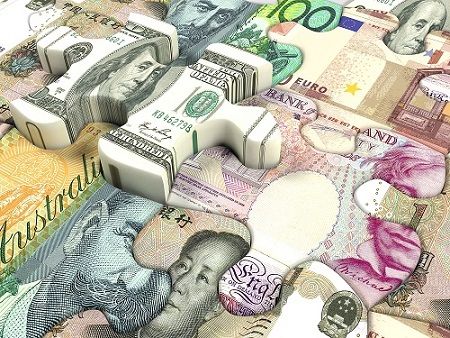USD/JPY Breaks 150! Focus on BOJ Interest Rate Meeting this Week

Market Review
Last week (10/23-10/27), the US dollar index rose by 0.37%, while non-US currencies had mixed performance. The Japanese yen appreciated by 0.2%, while the euro depreciated by 0.3%.
【Source: MacroMicro;Date2023/10/23-2023/10/27】
【Source: MacroMicro;Date2023/1/1-2023/10/27】
1. Under European and American economic disparities, EUR/USD remains under pressure
Last week, the Euro continued to decline for two main reasons. Firstly, the Eurozone's economic data remained weak while the United States maintained its strength. Secondly, the European Central Bank (ECB) provided a dovish message during its interest rate meeting.
Data on October 24th showed that the preliminary manufacturing PMI for October in the Eurozone fell from 43.4 to 43, and the preliminary services PMI dropped from 48.7 to 47.8. The composite PMI came in at 46.5, lower than the expected 47.4 and the previous value of 47.2, reaching its lowest level since November 2020.
In contrast, the US PMI for October unexpectedly exceeded expectations, with a preliminary composite PMI of 51, reaching a three-month high. The real GDP growth for the third quarter was 4.9% compared to the previous quarter, surpassing market expectations.
【Source:MacroMicro 】
Furthermore, on October 26th, the European Central Bank pressed the pause button on interest rate hikes as planned, stating that the current rates are already at restrictive levels, which will further dampen demand and help reduce inflation. Analysts widely believe that the ECB's tightening cycle has come to an end.
The German-US yield spread widened slightly last week, which continued to support the US dollar and put pressure on the Euro.
【Source:MacroMicro 】
Mitrade Analyst:
This week's focus will be on the Federal Reserve interest rate meeting and October inflation data in the Eurozone. If inflation continues to decline, the euro may continue to be under pressure and trend lower. However, considering the recent resilience of the euro against the US dollar, we estimate that the downward movement of the euro will be limited.
From a technical perspective, the EUR/USD has once again fallen below the 21-day moving average. If it manages to break above the 21-day moving average and return to the upward trend line this week, there is a possibility of further rebound, with resistance around 1.07. On the other hand, if it fails to hold this position, there is an increased risk of further downside for the EUR/USD, with support around 1.045.
【Source:TradingView】
2. USD/JPY Surges Past 150! Focus on BOJ Interest Rate Meeting this Week
On October 26th, US Treasury yields surged again, pushing the yen to its lowest level in a year, breaking through the psychological level of 150. However, due to heightened risk aversion, the USD/JPY retreated below 150.
【Source:MacroMicro 】
With the yen falling below 150 against the US dollar, foreign exchange traders became cautious as this level had previously prompted intervention by Japanese authorities.
This week, the Bank of Japan will announce the outcome of its interest rate meeting and unveil the latest economic and inflation outlook. A recent report in the Japanese media suggested that the central bank may consider adjusting its Yield Curve Control (YCC) program at this meeting, although officials hold differing views.
However, most analysts believe that despite the widening interest rate spread between the US and Japan and the yen's evident weakness, Japan has no intention of abandoning its ultra-loose monetary policy. Currently, the Japanese government aims to maintain low interest rates to stimulate the economy and wage-driven inflation, while also stabilizing the exchange rate to prevent import-driven inflation from eroding domestic purchasing power and slowing down domestic recovery. Clearly, the Bank of Japan will continue to face a dilemma.
Mitrade Analyst:
Although the current market views the adjustment of monetary policy by the Bank of Japan at this meeting as a low probability event, we believe there is a possibility of adjusting the Yield Curve Control (YCC) policy. However, if the Bank of Japan maintains its current stance, the yen is likely to further depreciate, potentially triggering foreign exchange intervention.
From a technical perspective, the USD/JPY has retraced towards the 21-day moving average. If it breaks above 150 again this week, the next target would be around the previous high near 152. Conversely, if it fails to hold above the 21-day moving average near 149.5 this week, the USD/JPY could see a significant decline with support around 148.
【Source:TradingView】
* The content presented above, whether from a third party or not, is considered as general advice only. This article should not be construed as containing investment advice, investment recommendations, an offer of or solicitation for any transactions in financial instruments.

